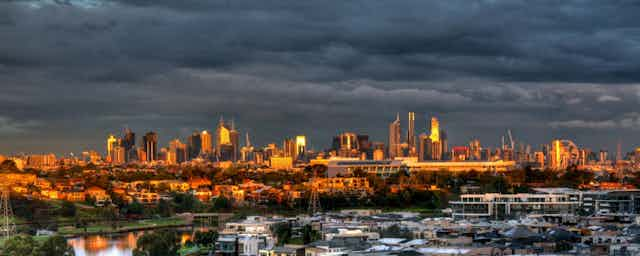When Isaac Newton produced his Laws of Motion in 1687, it led to speculation that his new gravitational force could explain the social forces between people.
Thinkers put forward various arguments for treating human relations like physical relations, and by the late 19th century, “social physics” had become a small but significant tradition, with Ravenstein’s Laws built on the notion that the size of places and distance between them influenced the flow and direction of migration. When the great economist Alfred Marshall proposed the idea that as places got bigger they generated economies of scale, this idea was consistent with the way population and traffic movements might be modelled.
While there have long been efforts to establish a “science of cities”, progress was only made after the development of complexity theory - the study of complex systems and the interaction of their parts. Today it underpins our understanding of cities and influences the interventions we make through urban planning.
For the 100 years, we have had a love-hate relationship with cities but today, the general consensus on cities has shifted. Once the view was that cities were evil places and that planning should attempt to dissipate this evil with a return to the countryside. This in turn fostered urban sprawl.
In an almost total about-face, cities, especially big cities, have now become the flavour of the month. Behind this urban favouritism is the notion that the bigger the city, the greater the diversity, the greater the number of opportunities - and the greater the potential rewards.
This relies on the premise that as cities get bigger, the number of potential interactions or contacts increases proportionally (at the rate of the square of the population). It’s apparent that all these possible connections are never likely to be made real, because most people can never manage more than about 150 close contacts. However, the pressure to interact grows inexorably with city size, reflecting the increasing pressure to innovate. And one of the clearest indications that big cities generate more opportunities is that incomes tend to grow more than proportionately with city size - bigger cities are richer cities.
The downside of city growth is that congestion also increases. This is reflected in growth of crime and traffic densities at above the expected, proportionate rate. The mixing of populations too, at increasing distances from workplaces, also adds to the cost of living in ever-bigger cities, so the trade-off between benefits and costs is often unclear.
Writing in Science this week, Luis Bettencourt unpacks these rather simple relationships between the levels of innovation, income, congestion and many other factors compared against city size. His elegant and plausible thesis is that as cities grow, their average incomes grow, as do their abilities to innovate. The infrastructure that services them increases at a less than proportionate rate, and thus forces further efficiencies. While he demonstrates that the mixing of populations as cities grow leads to increased costs, he argues these costs are outweighed by the benefits of increased income and innovation-generating interactions.
However, it would not take very great changes in the parameters of this model to upset the applecart and reverse this “superlinear scaling”, as the phenomena is called. But the theory is plausible nonetheless, and it provides an elegant theoretical basis for much of the evidence observed in reality.
This theory of city size treats cities as though they were disconnected from one another, and in this globalised age we know this cannot be. But it is possible to extend the theory to embrace commuting and other sorts of intercity connections without destroying Bettencourt’s logic.
Looking at city size distributions world wide, some very large cities have much greater income than might be expected. London, for example, is a dramatic outlier in the UK with a much more than proportionate increase in income and creativity (measured by patent filings and financial services) than next tier cities such as Manchester and Birmingham. The same appears true for France, with Paris similarly standing out. Another complication is that cities merge into one another – for example in the Netherlands it is hard to know where Amsterdam stops and Utrecht, The Hague, and Rotterdam begin.
It is early days yet and much more testing of this theory is required in different urban systems around the globe. Even if bigger cities tend to be richer, the notion that cities should strive to become bigger does not necessarily follow. Bigger cities may be richer but costs of living are greater too. Greater opportunities come at a cost of more crime and congestion, higher house prices and more stressful journeys to work and school. Big cities tend to have more buzz - they are magnets for the young and talented, but what the young want is not for everyone.
What Bettencourt and his colleagues at Santa Fe have produced is not so much a formula for building better cities in the future, but a mechanism of looking at the growth and change of the cities we have, one that spells out the opportunities and costs of bigness. In my view, this is not a recipe that demolishes the age old argument that “small is beautiful”, but a formula for studying the internal dynamics of cities that show how these opportunities can be realised, and the costs of doing so.

